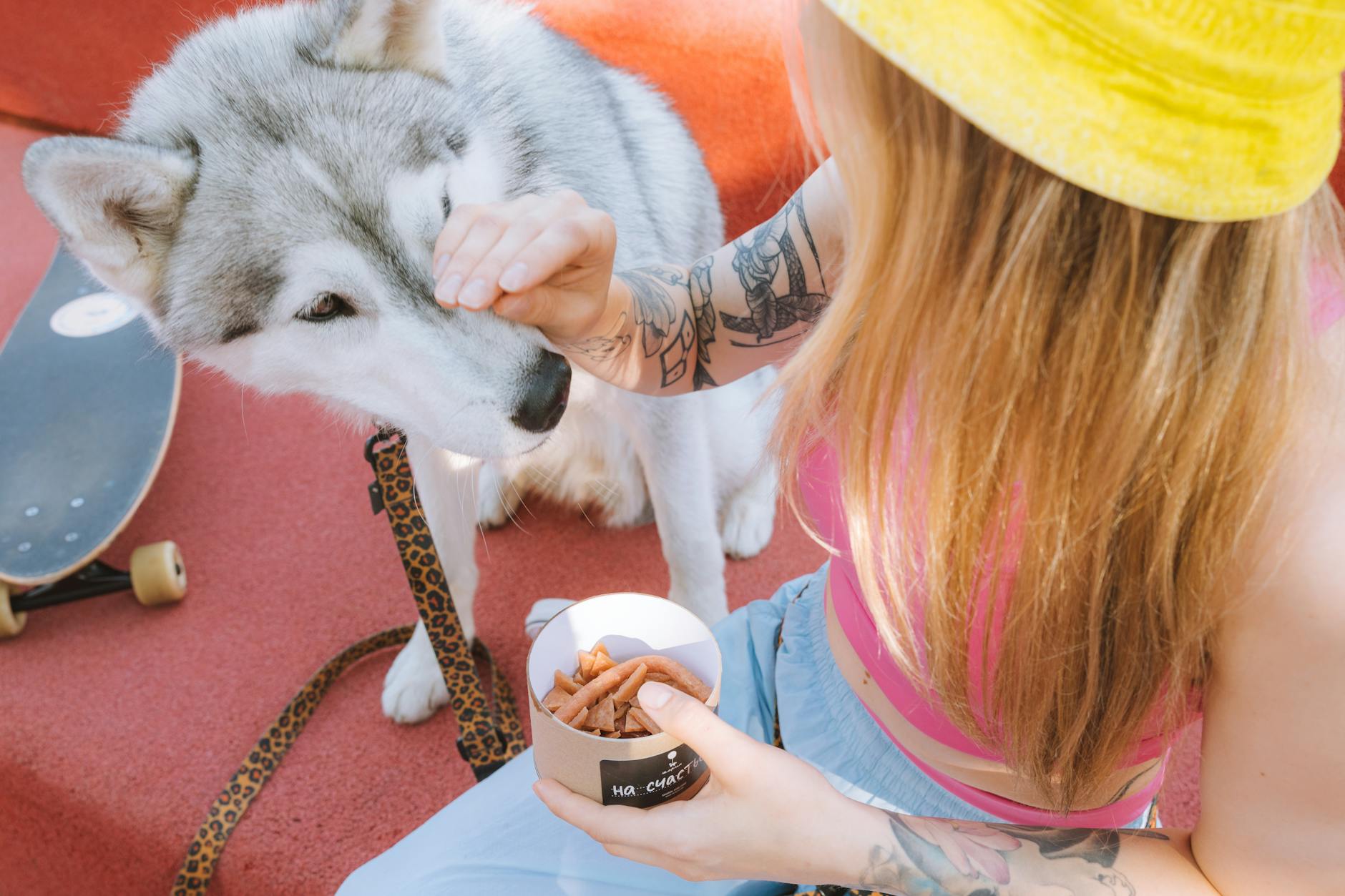5 Healthy Homemade Dog Treat Recipes You Can Make Today

Homemade Dog Treat Recipes. Who doesn’t love spoiling their dog with a treat they truly enjoy? But while store-bought options are convenient, they’re not always the healthiest choice for your furry friend. More dog owners are turning to homemade recipes, ensuring their pets get tasty, nutritious snacks made with care.
You can customize treats to suit your dog’s preferences and dietary needs using safe, wholesome ingredients. Plus, the process is more straightforward than you might think! Check out this collection of recipes tailored for active pups for even more inspiration.
Table of Contents
Benefits of Homemade Dog Treats
When it comes to treating your furry friend, homemade dog treats offer a world of benefits that go beyond just loving care. They allow you to ensure quality, cater to dietary needs, and save money without compromising taste or nutrition. Let’s look at how homemade treats stand out.
Control Over Ingredients
Have you ever checked the label on a bag of store-bought dog treats? They can include artificial additives, preservatives, and questionable ingredients you wouldn’t want your best friend consuming. By making treats at home, you get complete control.
That means you can choose high-quality, natural ingredients free from harmful fillers. Opt for wholesome options like pumpkin, sweet potato, or peanut butter. Plus, skipping preservatives means fresher snacks every time. This control helps ensure your dog gets the nourishing, clean food they deserve.
Check out this recipe for a great guide on crafting treats at home with healthy ingredients.
Customization for Dietary Needs
Every dog is different, and one-size-fits-all treats don’t always cut it. Homemade options allow you to tailor ingredients to your pet’s unique dietary needs.
- Allergies? Replace common allergens like wheat with alternatives like oat flour.
- Sensitive stomachs? Include gut-friendly choices like plain yogurt or pumpkin.
- Weight concerns? Go for low-calorie ingredients like carrots or green beans.
This level of customization is beneficial for dogs with chronic conditions like diabetes or kidney issues. When you’re the chef, you can create something that fits their health perfectly. Not sure where to start? Learn about safe ingredient substitutions here.
Cost-Effectiveness
Homemade dog treats can be surprisingly easy on the wallet. Why pay a premium for boutique dog snacks when you can whip up a batch at home using items from your pantry? Ingredients like oats, bananas, and carrots are affordable and readily available.
What’s more, making larger batches can save both time and money. You’re cutting out the markup prices from commercial pet brands and still giving your pup something better. Imagine the satisfaction of providing healthier treats while keeping budget-conscious!
For more insight, explore how homemade treats compare.
Each benefit makes homemade dog treats a thoughtful, practical choice for any dog owner. They invest in your pup’s health, happiness, and longevity.
Healthy Homemade Treat Recipes Your Dog Will Love
When it comes to spoiling your dog with treats, nothing beats homemade options. Healthy, easy to make, and full of love, these recipes clear you of unnecessary artificial ingredients. With just a few pantry staples, you can whip up wholesome snacks that will have your dog wagging their tail in no time. Here are some must-try recipes that blend nutrition with taste.
Peanut Butter and Banana Biscuits

Photo by Yaroslav Shuraev
These soft, chewy biscuits are a hit with most dogs and are packed with protein and potassium. Perfect for a quick homemade treat that takes minimal prep time.
Ingredients:
- 1 ripe banana
- 1/4 cup natural peanut butter (unsalted, no xylitol)
- 1 cup oat flour
Instructions:
- Preheat your oven to 325°F (165°C).
- Mash the banana in a bowl, then mix in peanut butter until smooth.
- Slowly add oat flour, stirring until dough forms.
- Roll out the dough, cut into shapes with cookie cutters, and place on a baking sheet lined with parchment paper.
- Bake for 12–15 minutes or until firm. Cool completely before serving.
For more about incorporating peanut butter into dog diets, read this guide.
Pumpkin and Oatmeal Dog Treats
Pumpkin is a powerhouse for dogs! It aids digestion and provides vitamins A, C, and E. Paired with oatmeal, these treats are great for sensitive tummies.
Ingredients:
- 1/2 cup pure pumpkin puree (not pie filling)
- 1 cup rolled oats (ground into flour)
- 1/4 teaspoon cinnamon
Instructions:
- Combine pumpkin puree and cinnamon in a bowl.
- Gradually mix in oat flour until dough consistency forms.
- Roll out the dough, cut it into small, bite-sized pieces, and place it on a baking sheet.
- Bake at 350°F (175°C) for 10–12 minutes. Let cool before serving.
Oatmeal offers added fiber and is ideal for dogs with grain allergies. Learn about more superfood treatment options on this page.
Sweet Potato Chews
These chewy snacks are simple and packed with beta-carotene for healthier skin and eyes. They’re an excellent alternative to rawhide.
Instructions:
- Wash and peel 1 or 2 large sweet potatoes.
- Slice them lengthwise into thin strips, about 1/4 inch thick.
- Arrange slices on a baking sheet lined with parchment paper.
- Bake at 250°F (120°C) for 2–3 hours, flipping halfway through.
- Let them cool completely before serving.
For more cost-saving healthy treats, check out Dog Cake Recipes.
Carrot and Apple Training Treats
These small, nutrient-dense treats reward good behavior during training sessions. Low-calorie and rich in vitamins, they’re a guilt-free indulgence for your pup.
Ingredients:
- 1 grated carrot
- 1/2 cup unsweetened applesauce
- 1 cup oat flour
- 1 large egg
Instructions:
- Preheat oven to 350°F (175°C).
- Combine all ingredients in a bowl, mixing thoroughly.
- Scoop small amounts (teaspoon-sized) onto a parchment-lined baking sheet.
- Bake for 15–20 minutes or until firm. Allow to cool before use.
For more flexibility in your recipes, find helpful ingredient swaps here.
Frozen Yogurt Dog Treats
On a hot day, there’s nothing better for your dog than a refreshing frozen yogurt treat. Packed with probiotics and calcium, this recipe helps keep guts healthy.
Ingredients:
- 1 cup plain unsweetened yogurt
- 1/2 cup mashed banana
- 1 tablespoon peanut butter (optional)
Instructions:
- Mix all the ingredients in a blender until smooth.
- Pour the mixture into silicone molds or ice cube trays.
- Freeze for at least 3–4 hours or until solid.
- Pop out and serve!
For more ideas to keep your dog cool, check out this list of summer treat recipes.
FAQ
Navigating the world of homemade dog treats can raise many questions. Addressing common concerns is essential so you can confidently provide your pup with healthy, safe, and delicious recipes. Let’s dive into some of the most frequently asked questions about whipping homemade treats for your furry friend.
How Do I Safely Store Homemade Dog Treats?
Storage is a big concern when making treats in bulk. Unlike store-bought options, homemade versions lack preservatives so that they can spoil more quickly. Generally, treats should be stored in an airtight container in the fridge for up to a week. If you’ve made a larger batch, don’t worry—most recipes are freezer-friendly! Pop them into a resealable bag, label them with the date, and freeze them for up to three months.
For more detailed tips on treat storage, check out this comprehensive guide on homemade dog treats.
Can I Use Substitutes for Ingredients My Dog is Allergic To?
Absolutely! One advantage of homemade dog treats is the flexibility to accommodate allergies or dietary preferences. For example:
- Substitute wheat flour with oat flour or coconut flour for grain-free options.
- If needed, replace ingredients like peanut butter with almond butter (unsalted, no xylitol).
- Experiment with protein alternatives like cooked chicken or salmon for added variety.
Always introduce new ingredients gradually to ensure they suit your dog’s digestive system. If you need guidance on ingredient safety, explore this handy resource on safe dog treat ingredients.
What Ingredients Should I Avoid in Dog Treats?
Not all human foods are safe for dogs. Keep these ingredients out of your recipes to avoid toxic reactions:
- Grapes and raisins (can cause kidney failure)
- Xylitol (a sugar substitute found in some peanut butter)
- Chocolate and cocoa products
- Onions and garlic
- Macadamia nuts
Stick to simple, natural ingredients that are well-known for their safety. When in doubt, consult your veterinarian about any specific ingredient you’re unsure about.
For a more detailed breakdown of safe and unsafe ingredients, see Dog Treat Ingredients: A Chef’s Guide.

Photo by RDNE Stock project
How Do I Know if a Recipe is Healthy for My Dog?
A good rule of thumb is whether you could eat it yourself (minus any unseasoned or raw proteins). Stick to recipes that:
- Use simple, whole food ingredients
- Avoid excessive sugars or salts
- Provide nutrients like protein, fiber, or vitamins that benefit your pup
You don’t need to be a canine nutritionist—focus on balance. For instance, sweet potato treats provide beta-carotene, while peanut butter biscuits are high in protein.
If you’re looking for foolproof recipes, check out options on this page.
What Are the Shelf Lives of Common Homemade Treats?
Shelf life depends heavily on the recipe and storage method.
- Baked treats: Last about a week in the fridge.
- Dehydrated snacks: Can be stored in a dry, cool place for 2-3 weeks.
- Frozen treats: Stay suitable for up to three months in the freezer.
Always label batches with preparation dates, and remember to give them a sniff test before serving.
For more FAQs about dog treats, see FAQs on gourmet treats.
Conclusion of Healthy Homemade Treat Recipes Your Dog Will Love
When crafting treats straight from your kitchen, you’re not just making snacks—you’re creating moments of joy for your furry friend. Homemade dog treats offer a blend of health benefits, cost-effectiveness, and the ability to cater to your dog’s unique dietary needs. After learning all these recipes, there’s no reason not to try them!
Before You Go, Keep These Tips in Mind
- Use fresh, dog-safe ingredients for every recipe.
- Be mindful of portion sizes to maintain your dog’s calorie balance.
- Always check with your vet about new ingredients or unique health concerns.
Explore these easy dog treat recipes if you’re eager to find more nutritious ideas to spoil your furry companion.
No matter what you try, nothing beats knowing your pup is happy and thriving with healthy snacks made from love!
Tips for Making Healthy Dog Treats
Ensuring your dog gets the best nutrition extends beyond their daily meals—it includes their snacks, too! Making homemade dog treats is a heartfelt way to show care and lets you control the quality and safety of ingredients. These tips will help you create delicious and nutritious treats for your furry friend.
Choosing Dog-Friendly Ingredients
When selecting ingredients for your dog’s treats, safety and nutritional value should come first. You don’t want to use foods that might harm your pet.
Here are great ingredients to consider:
- Peanut butter: Ensure it’s unsalted and xylitol-free.
- Pumpkin puree: Great for digestion and rich in vitamins.
- Oat flour: An excellent alternative to wheat for dogs with grain sensitivities.
- Sweet potatoes and carrots: Packed with essential nutrients and natural sweetness.
- Plain, unsweetened yogurt: Provides a source of probiotics.
Avoid toxic ingredients like chocolate, grapes, raisins, onions, and foods with added sweeteners like xylitol. For an extensive list of dog-friendly superfoods, check out this guide.
Storage and Shelf Life
Proper storage is essential to preserve the freshness and safety of homemade treats. Unlike commercial products, your treats won’t contain preservatives.
- Room temperature: Store dry treats like biscuits in an airtight container for up to a week.
- Refrigeration: Soft or high-moisture treats should be kept in the fridge and used within five days.
- Freezer-friendly: For larger batches, freeze treats in resealable bags or containers for up to three months.
Always label your stored treats with the date they were made to avoid serving something that’s expired. Here’s a helpful visual example:

Photo by Jessica Lewis ???? thepaintedsquare
If you’re new to mastering storage methods, articles like this one on tips for homemade treats provide detailed advice.
Incorporating Superfoods
Want to maximize the nutritional benefits of your dog’s treats? Incorporate superfoods that are safe and beneficial for canine health. These ingredients don’t just add nutrients—they elevate flavor too!
- Chia seeds: A tiny powerhouse packed with omega-3 fatty acids and fiber.
- Blueberries: Rich in antioxidants for overall health.
- Turmeric: Known for its anti-inflammatory properties—just a pinch is enough.
- Kale or spinach: Provides a boost of vitamins A, C, and K.
Mixing these into treats can help optimize your dog’s wellness, from shiny coats to strong immune systems. For step-by-step ideas, explore this superfood recipe breakdown.
Focusing on these tips ensures your homemade treats are healthy, safe, and tailored just for your dog’s needs. Stay tuned for more delicious recipes and creative ideas!







One Comment